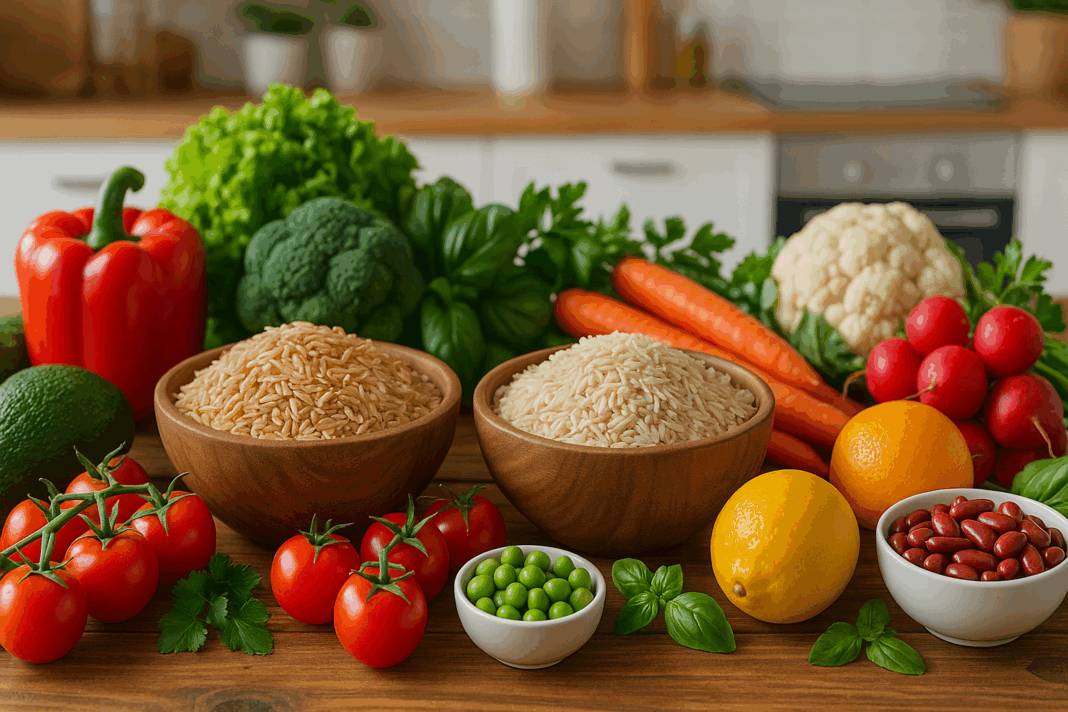In an age where nutrition has become a cornerstone of health, wellness, and athletic performance, understanding the foods that fuel our bodies has never been more important. For anyone seeking to enhance endurance, elevate stamina, or support long-term performance, making informed food choices is not just a lifestyle preference but a necessity. Among the wide spectrum of dietary staples, whole grains have long held a revered status, thanks to their dense nutritional profile and sustained energy release. In this context, two grain-based foods stand out for their health potential: whole grain rice and whole wheat rice.
Both are often recommended as part of a balanced diet, particularly for individuals engaged in performance enhancement and endurance training. But what exactly are these grains, how do they differ, and how can they support your journey to optimal health? This article delves deep into the intricacies of whole grain rice and whole wheat rice, illuminating their distinct characteristics, nutritional advantages, and roles in a performance-optimized diet. With a focus on evidence-based insights and practical applications, this discussion will help you make smarter, more effective nutrition choices.
You may also like: Smart, Simple Recipes for a Balanced Diet: Expert-Backed Healthy Food Dishes to Support Everyday Wellness
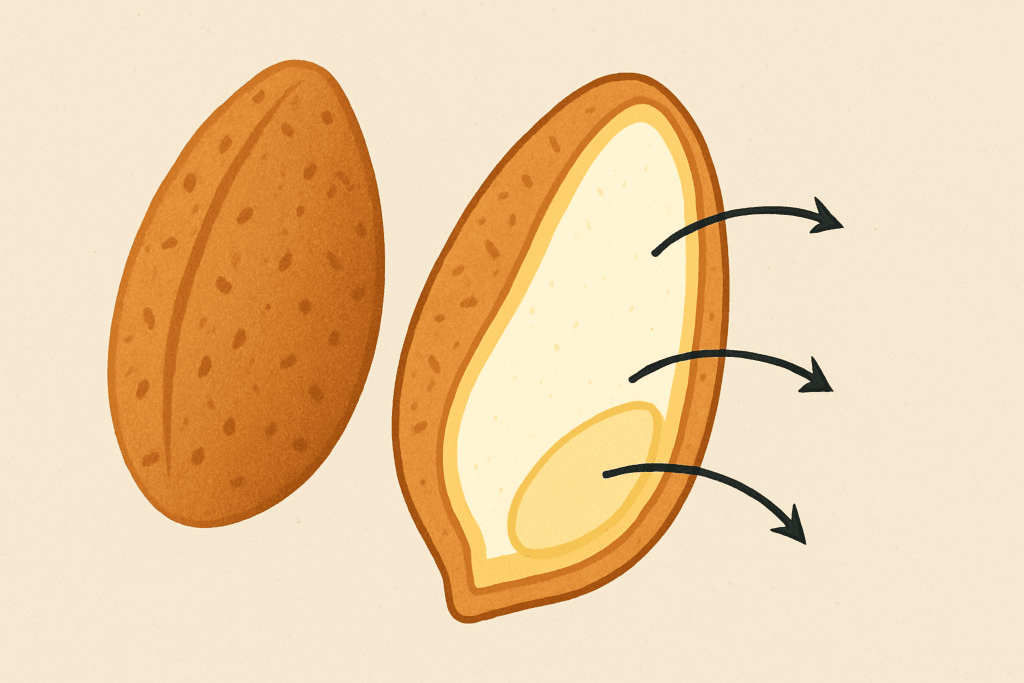
Understanding Whole Grains: A Foundation for Wellness
To fully appreciate the value of whole grain rice and whole wheat rice, it’s essential to understand what defines a grain as “whole.” A whole grain retains all three parts of the grain kernel: the bran, germ, and endosperm. Each of these layers offers unique benefits. The bran provides fiber and antioxidants; the germ contains B vitamins, protein, and healthy fats; and the endosperm delivers carbohydrates and some protein. In contrast, refined grains lose the bran and germ during processing, stripping them of many vital nutrients.
Whole grains are renowned for their complex carbohydrates, which digest slowly and provide a more stable release of energy. This makes them particularly beneficial for endurance athletes and those pursuing sustained energy throughout the day. By integrating whole grain options like whole grain rice and whole wheat rice into your diet, you maintain satiety longer, stabilize blood sugar levels, and supply your body with a steady stream of fuel for performance and recovery.
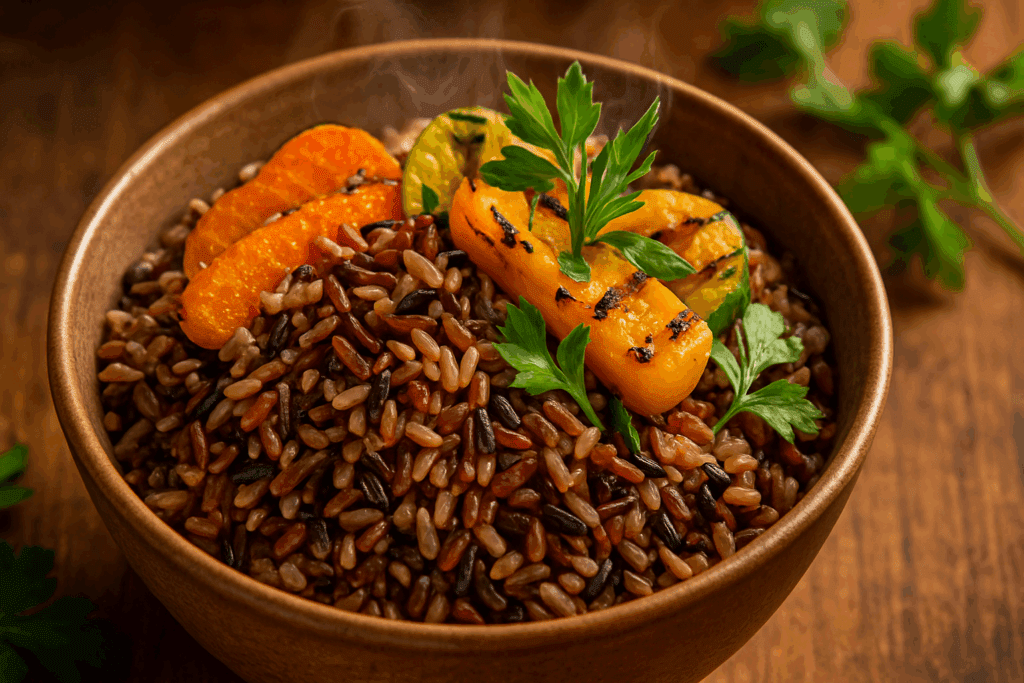
Whole Grain Rice: Nature’s Energy Reservoir
Whole grain rice, often synonymous with brown rice, includes varieties such as black rice, red rice, and wild rice, all of which retain their outer layers and are minimally processed. Because it retains the bran and germ, whole grain rice offers a rich array of nutrients including magnesium, selenium, phosphorus, and manganese. It also contains antioxidants such as flavonoids and phenolic acids, which contribute to reducing oxidative stress—a key concern for athletes and individuals under physical strain.
Beyond its nutritional profile, whole grain rice plays a pivotal role in energy regulation. Its low glycemic index means it releases glucose gradually into the bloodstream, preventing energy crashes and improving metabolic function. For those engaged in high-intensity workouts, long-distance running, or resistance training, this makes whole grain rice a reliable staple that supports prolonged physical output.
Additionally, whole grain rice is inherently gluten-free, making it accessible for individuals with gluten intolerance or celiac disease. Its versatility in culinary use also makes it easy to incorporate into a wide range of meals, from grain bowls to stir-fries and even breakfast porridges, further reinforcing its practicality for daily consumption.

Whole Wheat Rice: A Hybrid Nutritional Contender
While less commonly discussed, whole wheat rice is a term sometimes used to refer to whole grain wheat berries that have been cooked to a rice-like texture. It may also describe processed wheat products such as cracked wheat or bulgur when prepared similarly to rice. The confusion often arises from marketing terminology, but the health merits of whole wheat grains, when consumed in a rice-like form, are undeniable.
Whole wheat grains are a robust source of dietary fiber, especially insoluble fiber, which enhances digestive health and supports satiety. These grains are also rich in essential B vitamins—including niacin, thiamin, and folate—as well as minerals such as iron and zinc. For individuals focused on building endurance and maintaining peak performance, the inclusion of whole wheat rice-style grains can support energy metabolism and red blood cell production, both crucial for oxygen transport and muscle efficiency.
One of the standout features of whole wheat rice is its potential to improve insulin sensitivity. Studies suggest that diets high in whole wheat products can reduce the risk of metabolic syndrome and type 2 diabetes. This not only benefits general health but also plays a significant role in athletic longevity, helping athletes maintain peak condition over time.
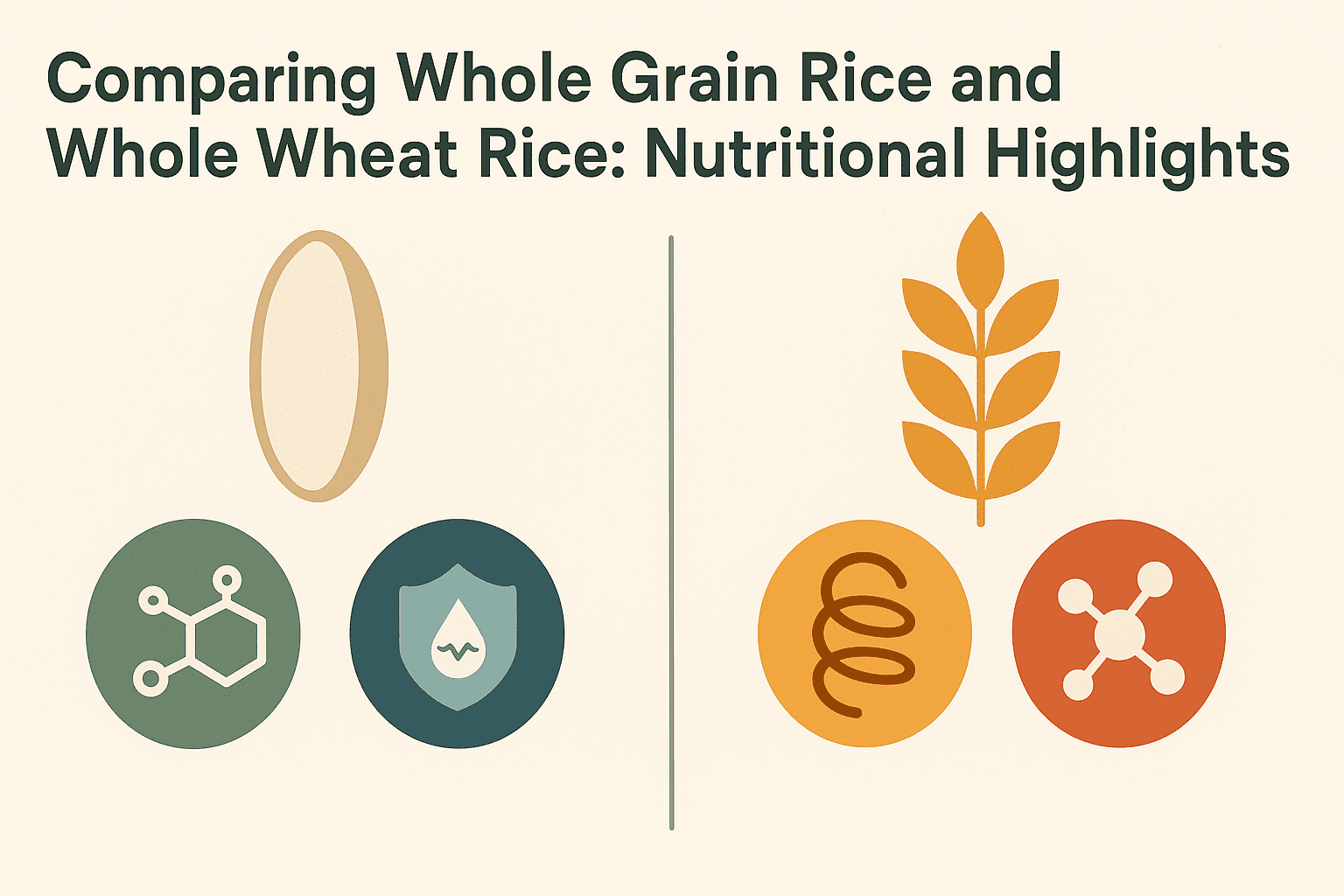
Comparing Whole Grain Rice and Whole Wheat Rice: Nutritional Highlights
Though both whole grain rice and whole wheat rice fall under the umbrella of whole grains, their nutritional compositions differ subtly yet significantly. Whole grain rice tends to be slightly higher in manganese and magnesium, two minerals vital for bone health and enzymatic reactions related to energy production. On the other hand, whole wheat rice-style grains are typically denser in dietary fiber and contain higher levels of certain B vitamins, which support nerve function and energy conversion.
When it comes to protein content, whole wheat rice has a slight edge, making it particularly beneficial for athletes looking to build or preserve muscle mass. The fiber content in whole wheat also promotes a healthy gut microbiome, which has been increasingly linked to improved immune function and better nutrient absorption—factors that are especially important for those involved in intense training.
Calorically, both grains are comparable, with only slight variations depending on the specific variety and preparation method. Their glycemic indexes also align closely, supporting steady energy without the risk of insulin spikes. This makes them both suitable for inclusion in meal plans designed to optimize endurance and stamina.

Whole Grains and Endurance: The Science Behind Sustained Performance
The relationship between whole grain consumption and physical performance is supported by a growing body of research. Studies show that diets rich in whole grains, including whole grain rice and whole wheat rice, contribute to better cardiovascular health, enhanced metabolic efficiency, and improved body composition. These benefits are especially relevant for endurance athletes who require a consistent energy supply, efficient nutrient use, and rapid recovery.
Whole grains enhance glycogen storage, which serves as a primary fuel source during prolonged activity. The fiber content also contributes to gastrointestinal comfort during exercise, preventing digestive disturbances that can undermine performance. In this context, whole grain rice is particularly advantageous due to its balance of macronutrients and ease of digestion.
Moreover, whole wheat rice provides a substantial amount of iron and zinc, two minerals that support oxygen transport and tissue repair. Iron, in particular, is critical for the production of hemoglobin, which carries oxygen to muscles during exertion. Zinc contributes to immune resilience and wound healing, both of which are vital for athletes undergoing intense physical stress.
Practical Tips for Integrating Whole Grains Into Your Diet
Incorporating whole grain rice and whole wheat rice into your daily meals does not require a dramatic dietary overhaul. One of the simplest methods is to replace refined grains such as white rice or enriched pasta with whole grain alternatives. For example, opt for brown or wild rice instead of white rice in your lunch bowl, or choose cooked wheat berries in place of white couscous.
Meal prep can be a game changer when it comes to consistency. Preparing large batches of whole grain rice or whole wheat rice at the beginning of the week allows for quick assembly of nutrient-rich meals. Add sautéed vegetables, lean proteins, and healthy fats to create balanced dishes that support performance and recovery.
For those seeking variety, consider blending different types of whole grains. Mixing quinoa, farro, and whole grain rice not only adds textural complexity but also creates a broader nutrient profile. Similarly, alternating between whole wheat rice and traditional rice-based meals can keep your palate engaged without sacrificing health goals.
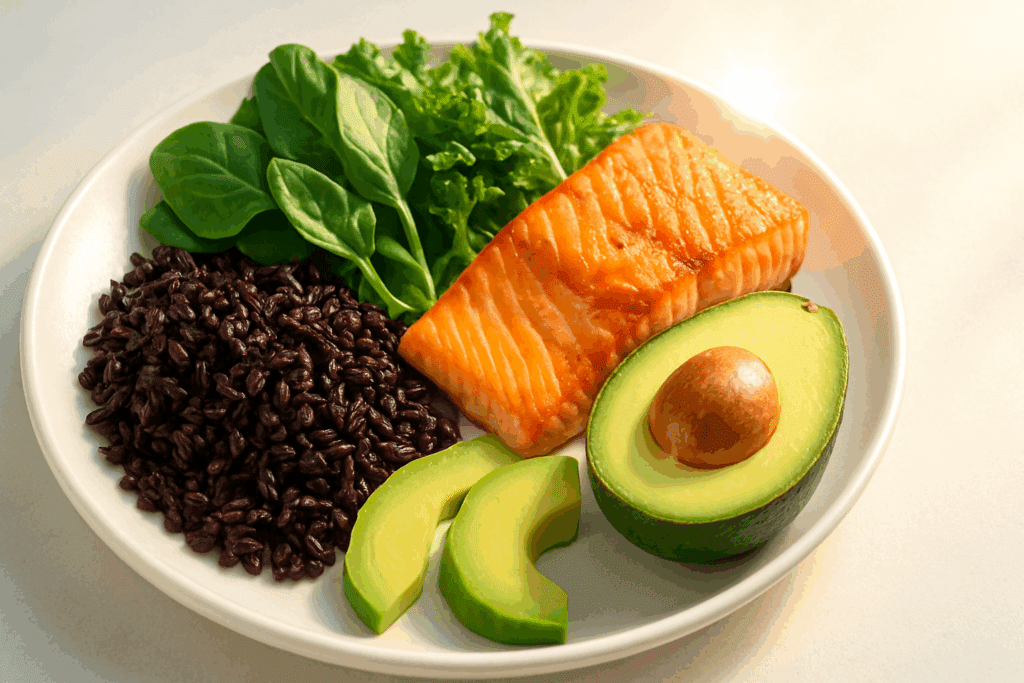
The Role of Whole Grains in Managing Inflammation and Recovery
Another significant advantage of whole grain rice and whole wheat rice lies in their ability to modulate inflammation. Intense exercise, while beneficial, often triggers an inflammatory response in the body. If left unchecked, chronic inflammation can impair recovery and increase the risk of injury. Fortunately, whole grains contain antioxidants and anti-inflammatory compounds that help counteract these effects.
Whole grain rice, particularly varieties like black rice, is especially high in anthocyanins—a type of flavonoid with potent anti-inflammatory properties. These compounds aid in muscle recovery and support joint health, which are crucial for sustaining long-term physical activity. Similarly, the high fiber content in whole wheat rice helps lower C-reactive protein (CRP) levels, a biomarker for systemic inflammation.
Including these grains in post-workout meals, particularly alongside lean proteins and healthy fats, can expedite the healing process and restore energy stores more effectively. This approach aligns with the principles of nutrient timing, which emphasizes the strategic consumption of specific nutrients to maximize exercise outcomes.
Whole Grains and Gut Health: A Vital Connection
Emerging research continues to underscore the importance of gut health in overall wellness and physical performance. The gastrointestinal tract is not only responsible for nutrient absorption but also plays a critical role in immune function, hormone regulation, and mental clarity. Whole grain rice and whole wheat rice contribute to gut health through their prebiotic fibers, which nourish beneficial gut bacteria.
By fostering a diverse and balanced microbiome, these grains help regulate digestion, reduce bloating, and enhance nutrient uptake. This becomes particularly valuable for athletes whose nutritional demands are elevated and whose digestive systems may be stressed by frequent training. A healthy gut can improve energy utilization, reduce recovery time, and even influence mood and motivation through the gut-brain axis.
Moreover, individuals transitioning to a high-performance lifestyle often experience dietary shifts that can disrupt gut balance. Introducing whole grains gradually, while staying hydrated and maintaining a varied diet, can ease this transition and support long-term digestive resilience.
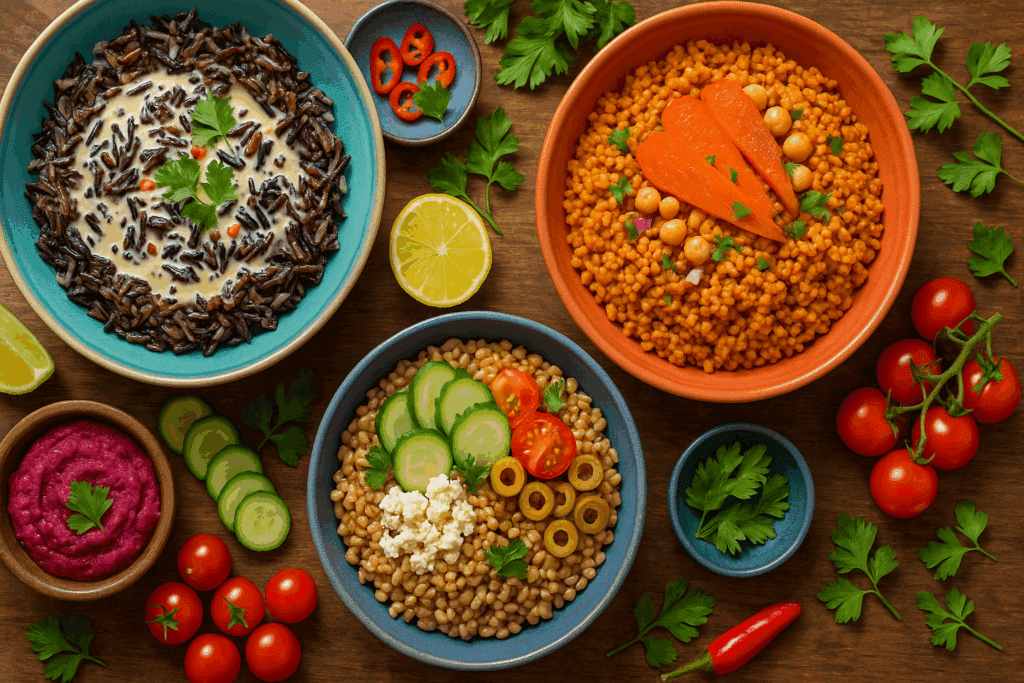
Culinary Creativity: Enjoying the Benefits Without Boredom
Nutrition should never feel restrictive, and whole grains offer ample opportunity for creativity in the kitchen. Whole grain rice and whole wheat rice can be used as the foundation for an array of dishes that are both delicious and performance-boosting. Think of hearty grain salads with roasted vegetables, protein-rich grain bowls with grilled chicken, or even breakfast stir-fries with eggs and leafy greens.
Experimenting with herbs, spices, and international cuisines can also breathe new life into these staples. A Moroccan-style bowl with cinnamon-infused whole wheat rice, chickpeas, and raisins offers a satisfying blend of sweet and savory. Alternatively, a Thai-inspired wild rice dish with coconut milk, lime, and lemongrass provides exotic flair while maintaining nutritional integrity.
These culinary adventures not only diversify your intake but also increase the likelihood of adherence to a healthy eating plan. When meals are enjoyable and varied, consistency becomes second nature, and health goals are more easily achieved.
Empowering Performance Through Nutritional Knowledge
Understanding the unique advantages of whole grain rice and whole wheat rice empowers individuals to make smarter nutritional choices that align with their goals. Whether you are training for a marathon, striving to build strength, or simply seeking better energy throughout the day, these grains offer foundational support.
By integrating these whole grain options into your routine, you benefit from more than just caloric energy. You tap into a reservoir of micronutrients, antioxidants, and fiber that work synergistically to promote recovery, resilience, and peak performance. Such informed decisions elevate your diet from functional to optimal, transforming nutrition into a strategic tool for long-term success.
The key lies in consistency, variety, and intentionality. When you view food as a performance ally rather than a restrictive obligation, the path to a healthier lifestyle becomes not only achievable but deeply rewarding.
FAQ: Whole Grain Rice and Whole Wheat Rice for a Healthier Lifestyle
1. How do whole grain rice and whole wheat rice influence hormonal balance in high-performance individuals? Whole grain rice and whole wheat rice offer essential B vitamins like B6 and folate, which are integral to hormone synthesis and regulation. Athletes and individuals in high-performance environments often experience hormonal fluctuations due to physical stress, and these grains help modulate those effects naturally. Whole wheat rice, for example, provides chromium, which may support insulin sensitivity—a critical factor in metabolic health. Whole grain rice offers magnesium, which is associated with improved sleep and reduced cortisol levels. The inclusion of both grains in one’s diet can create a foundation of hormonal stability that supports long-term physical output.
2. Can whole wheat rice and whole grain rice help mitigate stress-induced cravings? Yes, both whole wheat rice and whole grain rice can play a strategic role in reducing stress-induced cravings due to their high fiber and complex carbohydrate content. These carbs promote serotonin production, which can stabilize mood and reduce the desire for sugar-laden comfort foods. Whole wheat rice, in particular, has a slower digestive rate, helping to prolong satiety and minimize emotional eating. Moreover, the zinc and iron found in both grains support adrenal health, making the body more resilient to psychological stressors. Including whole wheat rice or whole grain rice in meals may offer a subtle but sustained psychological benefit when managing food impulses under stress.
3. How do these grains support long-distance endurance athletes specifically? For long-distance athletes, whole grain rice provides prolonged glucose availability, which helps sustain muscle contractions over extended periods. Meanwhile, whole wheat rice excels in replenishing iron stores—critical for oxygen transport during long bouts of exertion. The phosphorus in whole grain rice contributes to cellular energy production, complementing an endurance athlete’s recovery process. Whole wheat rice also contains betaine, a lesser-known compound that may reduce exercise-induced fatigue. Together, these grains support stamina through complementary physiological pathways, enhancing both aerobic efficiency and post-exercise recovery.
4. What are some lesser-known anti-aging benefits of whole grain rice and whole wheat rice? Beyond basic nutrition, whole grain rice and whole wheat rice offer polyphenols and other phytonutrients that contribute to cellular repair and longevity. The selenium in whole grain rice promotes DNA synthesis and helps neutralize free radicals, slowing cellular aging. Whole wheat rice contains lignans, plant-based compounds that are being studied for their potential in modulating estrogen metabolism and reducing age-related hormonal imbalances. The B vitamin profile across both grains supports mitochondrial function, which naturally declines with age. Thus, a diet including whole wheat rice and whole grain rice may help maintain youthfulness at a cellular level.
5. How can these grains support better sleep quality in physically active individuals? Whole wheat rice and whole grain rice can subtly enhance sleep quality due to their rich magnesium and tryptophan content. Tryptophan aids in melatonin production, the hormone that regulates sleep cycles, while magnesium contributes to nervous system relaxation. In athletes or active individuals, whose sympathetic nervous systems are often overstimulated, these nutrients help encourage parasympathetic (rest-and-digest) activity. Additionally, the complex carbohydrates in whole grain rice and whole wheat rice encourage steady insulin levels, which can help reduce nighttime awakenings. A small serving of either grain in the evening could be a natural, food-based strategy for sleep enhancement.
6. What culinary methods can maximize the nutrient absorption of whole wheat rice and whole grain rice? To enhance the bioavailability of nutrients, soaking whole grain rice or whole wheat rice in water for several hours before cooking can reduce phytic acid, a natural compound that inhibits mineral absorption. Using a pressure cooker or slow simmering these grains with broth instead of plain water can infuse extra minerals and enhance flavor. Adding a splash of lemon juice or apple cider vinegar to the soaking water can further improve the release of bound nutrients. Combining either grain with vitamin C-rich vegetables like bell peppers or broccoli can boost iron absorption from whole wheat rice. These simple culinary techniques elevate the nutritional value of already nutrient-dense grains.
7. Can whole grain rice or whole wheat rice be helpful for people transitioning off highly processed foods? Yes, whole grain rice and whole wheat rice are ideal transitional foods for individuals moving away from processed options. Their textures and flavors are hearty and satisfying, which makes them suitable replacements for more refined staples without triggering a sense of deprivation. Whole wheat rice provides an extra dose of fiber that promotes gut satiety, reducing cravings for processed snacks. Meanwhile, the natural sweetness and chewy texture of certain varieties of whole grain rice, such as red or black rice, can satisfy sensory preferences trained by processed foods. Integrating these grains gradually into meals can help retrain the palate while promoting long-term dietary sustainability.
8. Are there cultural or ancestral diets that emphasize whole wheat rice or whole grain rice consumption? Many traditional diets around the world prioritize whole grain rice and whole wheat rice as foundational staples. In East Asian cultures, black and red whole grain rice have been valued for centuries for their medicinal properties and are often used during festivals or as offerings. Similarly, Middle Eastern cuisines frequently feature cracked or bulgur wheat, a close cousin of whole wheat rice, in salads like tabbouleh or side dishes like pilaf. In Ayurvedic practices from India, whole grain rice varieties such as unpolished brown rice are believed to balance bodily doshas and support digestion. These long-standing culinary traditions reinforce the ancestral value and versatility of whole wheat rice and whole grain rice.
9. What emerging scientific studies support their role in mental health and cognition? Recent studies suggest that whole wheat rice and whole grain rice may contribute to cognitive health due to their impact on blood glucose stability and nutrient density. B vitamins found in whole wheat rice, such as niacin and thiamin, support neurotransmitter synthesis and reduce the risk of cognitive decline. Whole grain rice, especially pigmented varieties, contains antioxidants like anthocyanins, which have been linked to reduced inflammation in the brain. There is also growing interest in the gut-brain axis, and both grains support a healthy microbiome, which in turn influences mood and mental clarity. Including whole grain rice and whole wheat rice in a long-term diet may be a proactive strategy to support mental well-being.
10. What are some creative ways to include both whole grain rice and whole wheat rice in a performance-enhancing diet? Culinary innovation can help ensure consistent intake of whole wheat rice and whole grain rice without monotony. Whole wheat rice can be used as a stuffing for roasted vegetables or mixed into cold salads with chickpeas, parsley, and tahini dressing. Whole grain rice works well in breakfast bowls with cinnamon, nuts, and a dash of honey or even in sushi rolls made with avocado and smoked salmon. Blending both grains together in a single dish can create a rich tapestry of textures and complementary nutrients. Athletes and performance-driven individuals can benefit from pre- and post-workout meals incorporating these grains with strategic ingredients like lean protein and anti-inflammatory vegetables for maximal benefit.
Conclusion: Whole Grain Rice and Whole Wheat Rice as Cornerstones of Peak Nutrition
In the pursuit of endurance, stamina, and enhanced performance, food is more than fuel—it is strategy. Whole grain rice and whole wheat rice emerge as powerful tools in this strategy, offering a complex tapestry of nutrients that support both body and mind. From sustaining energy to accelerating recovery, and from promoting gut health to managing inflammation, these grains exemplify how smart nutrition choices can lay the foundation for a healthier, more empowered lifestyle.
Choosing between whole grain rice and whole wheat rice is less about picking a superior grain and more about understanding their complementary strengths. Together, they provide a diverse and robust nutritional profile that supports a wide range of health goals. When incorporated thoughtfully and creatively, they transform everyday meals into performance-enhancing experiences.
For those committed to optimizing their physical potential and embracing a lifestyle centered on well-being, whole grain rice and whole wheat rice are not just dietary staples—they are essential allies. Let your next meal be an investment in your health, your energy, and your future, one grain at a time.
Further Reading:
7 Whole-Grain Foods You Should Try

